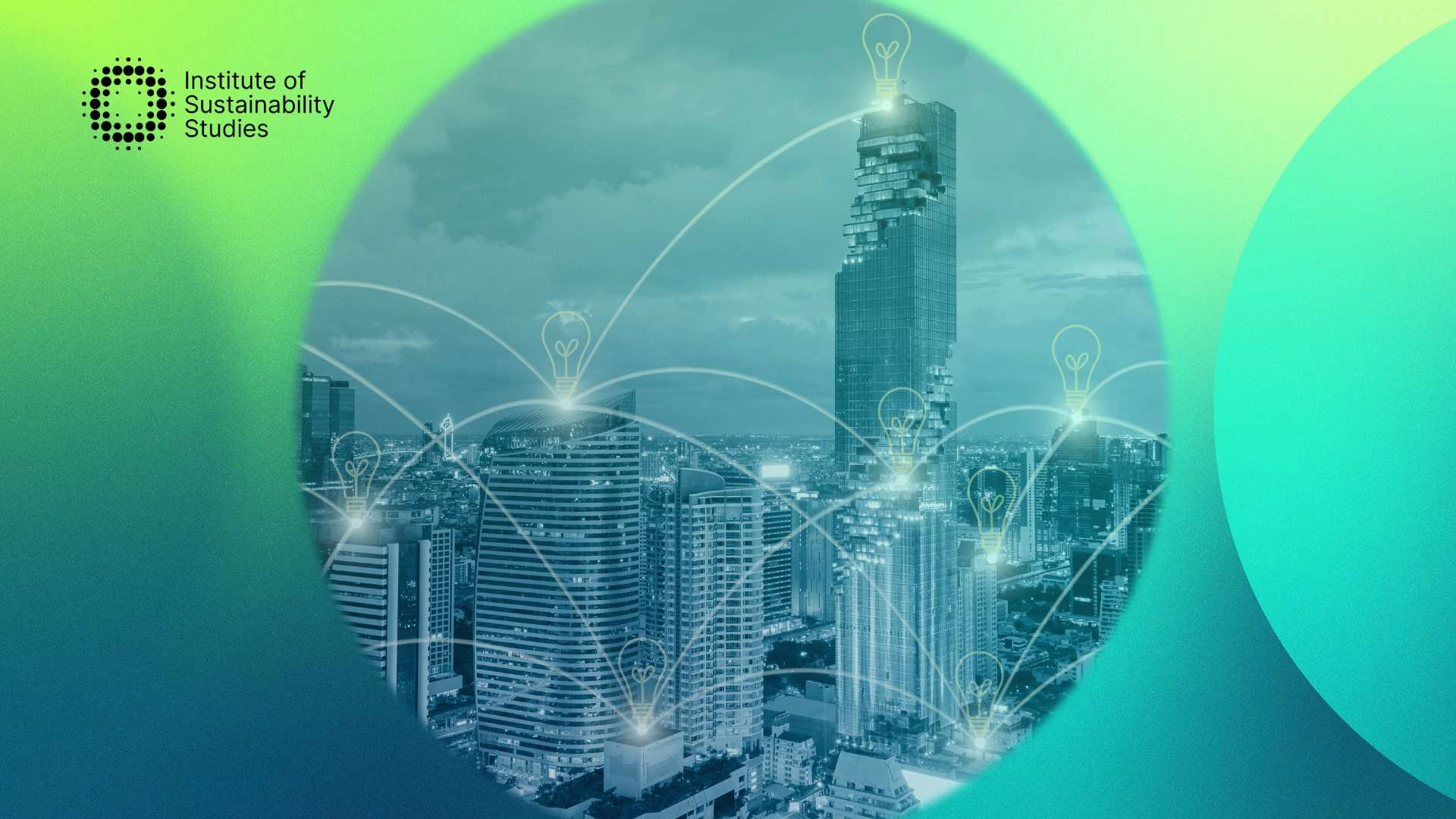In today’s rapidly evolving business landscape, sustainable leadership has emerged as a pivotal force for driving any corporate sustainability strategy. This management approach accelerates organisations towards long-term success, adaptation and resilience. Industry leaders who are genuinely incorporating sustainability into every aspect of their business (as opposed to giving it a lick of greenwash) are addressing critical social, environmental, and economic challenges, solving business problems holistically along the way and increasing employee retention. Keep reading to learn how to leverage sustainable leadership and build momentum for change.
Strategies which leaders can employ to build momentum for sustainable change
To build momentum for sustainable change within an organisation, leaders can employ various strategies that align stakeholders, optimise resources, and foster an environment conducive to long-term positive impacts. Below are some effective strategies.
Clear vision and communication
Articulate a clear and compelling vision of what sustainability means for the organisation. This vision should be communicated effectively across all levels of the organisation to ensure that everyone understands the goals and their role in achieving them. Communicating multiple times and in different modes is essential. Many companies make the mistake of thinking they have done the job once they’ve sent out one email to employees!
Effective communication involves multiple approaches: toolbox talks/ team meetings; posters in high-traffic areas; e-screen messaging and person-to-person conversations are all part of the communication toolbelt. Regular updates about progress and success stories can also keep things alive and evolving. How do your employees communicate their opinions/ input back to the decision-makers? Many businesses don’t have a formal way to welcome input but it pays off.
Embed sustainability in corporate strategy
Integrate sustainability goals into the core business strategy, making them central to the organisation’s operational and strategic decisions. This integration ensures that sustainability is not seen as an add-on or afterthought (i.e. greenwash) but as integral to the business’s success.
A materiality assessment is one tool that can be used to embed sustainability into the business strategy. It also is a key part of creating Science-Based Targets and an important foundational piece for the EU’s Corporate Sustainable Responsibility Directive (CSRD) which came into effect on January 1st, 2024.
Education and training
Provide ongoing education and training for employees at all levels about the relationship between Nature and the business you are in. Many people keep the two separate, not realising that every business extracts a toll from Nature, without paying the costs. Good education/training will give attendees a definite sense of the importance of sustainability and how they can contribute.
This could include workshops, seminars, and hands-on training demonstrating sustainable practices. Additionally, it can include courses like our in-demand Diploma in Business Sustainability course which allows employees to gain a well-rounded, practical understanding of business sustainability and how to implement it.
Setting clear goals and metrics
Define clear, measurable sustainability goals that align with the overall vision. Tools to define suitable, useful goals include:
- ISO standards (ISO 9001 for quality; ISO 14001 for environment; ISO 5001 for energy, etc.)
- Six Sigma
- Trello
- Materiality assessments (an essential part of the CSRD and setting Science Based Targets)
Metrics (qualitative or quantitative) are typically used to track progress and adjust strategies as needed. This provides direction but also holds the organisation accountable for its commitments. Bear in mind that data is only ever a good compass. However, it won’t consider all aspects of the course you are charting. Anecdotal/communicated information is also important.
Sustainable leadership by example
Leaders should model the sustainable behaviours they expect to see in their employees. This could mean altering how leaders travel for business, the sustainability of the operations space, or the corporate policies on procurement, transport and waste management.
Notably, the largest carbon emissions within most businesses are due to procurement, not energy consumption. Take charge of your scope 3 emissions (procurement) and you are now a leader in the field. Check the DEFRA website for internationally recognised carbon conversion factors, which can be used to calculate your Scope 3 emissions.
Innovation and adaptability
Encourage innovation by providing resources and support for new ideas that promote sustainability. This could involve setting up a dedicated innovation fund or support team that helps bring sustainable innovations from concept to implementation.
3M corporation is renowned for its innovation programmes which have invented everything from Post-its to electronic stethoscopes and solar films and another 100,000 patents. Setting aside time for employees to innovate/ tinker with products can bear fruit.
How leaders can measure the impact of their sustainability strategies
Measuring the impact of sustainable leadership strategies is crucial for understanding their effectiveness and making data-driven decisions to improve future initiatives. Below are some key methods and metrics leaders can use to assess the impact of their sustainability efforts.
Establish Key Performance Indicators (KPIs)
Develop specific, measurable KPIs that align with the organisation’s sustainability goals. KPIs can be established as Science-Based Targets (SBT), which are aligned with the Paris Agreement and therefore are designed to reduce greenhouse gas (GHG) emissions to prevent the worst effects of climate change.
KPIs or SBTs include ecological footprint reduction, energy efficiency improvements, waste reduction percentages, ensuring a fair wage at all stages throughout the supply chain, water usage cutbacks, and increases in employee engagement in sustainability programmes.
Sustainability reporting
Utilise sustainability reporting frameworks like the Global Reporting Initiative (GRI), the Sustainability Accounting Standards Board (SASB), or the Corporate Sustainability Reporting Directive (CSRD) to create transparent, standardised reports on environmental, social, and governance (ESG) performance.
Large companies are now bound by the CSRD (since January 1st 2024) to report to the EU on their sustainability progress, and SMES will be required to within the next three years. These reports help drive and track progress against stated sustainability goals and communicate this progress to stakeholders.
Employee surveys and feedback
Conduct regular surveys to gather employee feedback on the organisation’s sustainability initiatives and leadership’s role in promoting sustainable practices. This feedback can provide insights into how well the initiatives are being received and their impact on employee morale and engagement. Surveys can educate while asking questions, and therefore can also serve as an educational tool.
Environmental impact assessments
Use tools and software to monitor environmental impacts such as greenhouse gas emissions, water usage, waste generation, biodiversity and energy consumption. Comparing these metrics over time can help determine and drive the effectiveness of implemented sustainability strategies. Assessing the flora and fauna on and around your business property provides valuable information about biodiversity, which can usually be easily improved.
Economic analysis
Analyse the economic benefits of sustainability initiatives, such as cost savings from energy efficiency, revenue generated from environmentally friendly products, or the financial impact of enhanced brand reputation and customer loyalty due to responsible practices.
Audits and third-party assessments
Regular audits, both internal and by third parties, can help verify the accuracy of sustainability claims and assess the real-world impacts of the strategies. This can provide an unbiased view of how the sustainability initiatives are performing.
ISO standards, for example, require internal audits and compliance audits (pertaining to regulatory and customer obligations) on an annual basis, and this drives continual improvement and opportunities. Independent contractors’ audits offer a fresh eye and a handy ‘gap analysis’ showing what gaps there are between company goals/ KPIs and achieving those goals.
Benchmarking
Compare performance with industry benchmarks or against competitors to gauge where your organisation stands regarding sustainability. This can help identify areas of strength, weakness, threats and opportunities for improvement.
An internal SWOT analysis is helpful for this (strengths, weaknesses, opportunities, threats). Consultants can be brought in to benchmark against competitors, to introduce an independent/ unbiased eye.
Customer and supplier feedback
Collect feedback from customers and suppliers on how they perceive the organisation’s sustainability efforts and how they affect their company relationships. This can provide insights into the effectiveness of these initiatives from an external perspective.
It can also deliver important information on the effectiveness of the organisation’s communication concerning these initiatives. Quite often businesses think that they are communicating adequately but their efforts might be poorly placed or less effective than imagined. Feedback is a key part of materiality assessments.
Conclusion
Sustainable leadership is a fundamental approach that ensures businesses are poised for future success and resilience. By embracing and integrating sustainable practices, leaders can drive their organisations to thrive economically and contribute positively to environmental and social outcomes.
Ultimately, sustainable leadership fosters a culture of responsibility and innovation, making businesses more competitive and respected in the marketplace, while fulfilling their role as stewards of the planet for future generations. We all have a stake in this, it’s a privilege to be the person who can drive it.
_____
Want to read more top voices?









